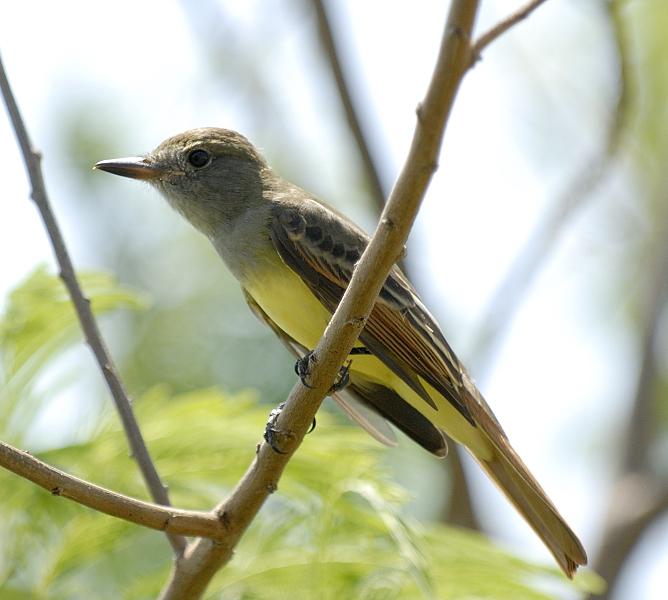Great Crested Flycatcher
The Great Crested Flycatcher (Myiarchus crinitus) is a large insect-eating bird of the tyrant flycatcher family. It is the most widespread member of the genus, Myiarchus, in North America and is found over most of the eastern and mid-western portions of the continent. It dwells mostly in the treetops and rarely is found on the ground. Adult Great Crested Flycatchers usually measure between 17–21 cm (6.7–8.3 in) in length with a wingspan of around 34 cm (13 in). This bird usually weighs between 27–40 g (0.95–1.41 oz). The Great Crested Flycatcher does not display sexual dimorphism. All adults are brownish on the upperparts with yellow underparts; they have a long rusty brown tail and a bushy crest. Their throat and breast are grey.
Their breeding habitat is deciduous or mixed forests across eastern North America. They nest in a cavity in a tree. Usually a snake skin is included in the lining of the nest, but sometimes a plastic wrapper is substituted. They wait on a high perch and fly out to catch insects in flight. Sometimes they may be seen hovering to pick food off of vegetation, buildings, and even windows. They also eat fruits and berries. The call of these birds is a whistled weep. These birds migrate to Mexico and South America, as well as to Florida and Cuba.


